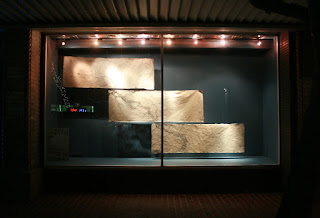Last Sunday I went to the
Sonoma Valley Museum of Art for their presentation, "Rag Men," part of
The Art of Handmade Paper exhibition (see my previous post
here). It featured the curator,
Simon Blattner, and Bryce Seidl, director of the Pacific Science Center, who is a also a paper historian and collector, as well as responsible for loaning many of the objects to the museum of the exhibition.
Most of Bryce's objects were left to him by his father, Roger Seidl, who was assigned by the US Government to assist and coordinate the rebuilding of the Japanese paper industry after WWII. Our country had bombed most of the paper mills, and during the reconstruction Roger Seidl ended up befriending many papermakers, who gifted him with some of the objects that were on display as part of the show.
Their discussion centered around the history of the commercial paper industry, which Bryce had worked in for years before his time at the Pacific Science Center. Much of it was just explaining the basics of how paper is made to those who were unfamiliar in the audience, but Bryce was able to rattle off facts - such as each person in the US still goes through 700 pounds of paper a year - that would have eluded me. He stressed that the paper industry has actually become much more environmentally friendly, with abilities to do things like recycle heat from the manufacturing for drying the paper, recycling the processing chemicals, and recycling paper in general. He stressed that the alternative to paper in most situations is plastics, from the petroleum industry, and that tree-based paper is a much more environmentally friendly alternative. Which, I guess when you think about it that way, is true. Although I will argue that that doesn't mean we shouldn't make intelligent choices about how we use paper.
Towards the end of the discussion, someone asked if either of these men thought that we would ever be a totally paper-free society, as the digital age progressed. Bryce said he didn't believe so, and also pointed out that as use of paper declines for things like books or business memos or whatever, we will still use it for toliet paper or tissues, and asked the audience to imagine a world without toliet paper. It was a very cogent point.
It was a good discussion, however I wished they had touched on the relevance, vitality, and importance of handmade paper as a contemporary art form.
I was fortunate to talk to Bryce a bit after the discussion, and he was excited to learn that I as an artist who was working with watermarks. Our discussion led him to ask the museum to pull out one of the objects they had chosen not to display out of storage, a large watermark his former paper company had produced that he wanted to show me.
I also had a chance to see the parts of the exhibition I'd missed in the crowd, such as this piece by
Helen Hiebert:
Finally, I got to spend some time with the installation of Tibetan prayer flags and paper in the front of the museum. I forgot to note the information down about the story behind the piece, but nonetheless, it was beautiful.




















































